
Employee satisfaction is more than just a nice-to-have factor in your organization. It’s a crucial element that can make or break your business.
According to a study by Gallup, highly engaged teams show 21% greater profitability, 17% higher productivity, and 10% better customer ratings than their disengaged counterparts.
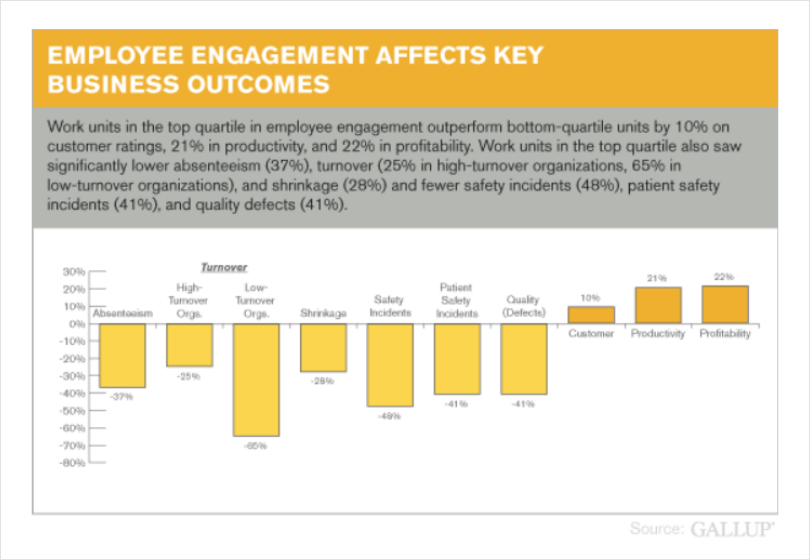
Employee satisfaction surveys help you understand whether your employees are happy with their roles and responsibilities, work environment, pay, benefits, company culture, career development, and more.
In this blog post, we will explore the benefits of employee satisfaction surveys and reveal some ready-to-use questions plus templates to help you conduct an effective employee satisfaction survey.
Employee Satisfaction Survey Questions
There are different types of surveys you can use to gain a comprehensive view of your employees’ experiences and make informed decisions on how to enhance their overall satisfaction.
Let’s explore the various categories of employee satisfaction surveys with example questions for each:
1. Company Culture
This category focuses on assessing employees’ perceptions of the organization’s values, mission, and work environment. Understanding company culture helps identify whether employees feel a sense of belonging and inclusion within the organization. It also helps measure employee alignment with organizational goals and the effectiveness of communication from leadership.
- How would you describe the company’s values and mission?
- Do you feel a sense of belonging and inclusion within the organization?
- How well does leadership communicate the company’s goals and strategies?
- Does the organization promote a collaborative and supportive work environment?
- Are employees recognized and appreciated for their contributions?
- Do you feel that the company promotes diversity and inclusion?
- Do you feel that the company’s values align with your personal values?
- Is there a clear and practiced policy on diversity and inclusion?
- Do you feel comfortable being yourself at work?
- How well do you think the company handles workplace conflicts?
2. Job Satisfaction
Job satisfaction questions aim to measure employees’ contentment with their current job roles and responsibilities. It gauges employees’ level of satisfaction with their work and the extent to which they feel recognized and appreciated for their contributions.
Evaluating job satisfaction helps identify factors that contribute to employee engagement and motivation, as well as pinpoint opportunities for improvement to enhance overall job satisfaction.
- Are you satisfied with your current job role and responsibilities?
- Do you receive regular feedback and recognition for your work?
- How would you rate the opportunities for professional development and advancement?
- Are you satisfied with the level of autonomy and decision-making authority in your role?
- Do you feel your skills and abilities are utilized to their fullest potential?
- How satisfied are you with the level of challenge and variety in your job?
- Do you feel your achievements are recognized at work?
- How satisfied are you with the physical environment of your workplace?
- Is there a sense of camaraderie among your team members?
3. Professional Growth
This category explores employees’ perception of professional development opportunities within the organization. It assesses their satisfaction with the availability of training and advancement options. Understanding professional growth helps identify if employees feel supported in their career goals and whether their skills and abilities are being utilized effectively.
By assessing professional growth, organizations can create tailored development programs and promote a culture of continuous learning.
- Does the organization provide sufficient training and development opportunities?
- How satisfied are you with the support for career advancement within the organization?
- Do you receive feedback and guidance on your performance and career goals?
- Are there clear opportunities for growth and progression in your current role?
- How well does the organization align your skills and interests with new projects or roles?
- Does the organization support continuous learning and professional certifications?
- Do you feel that your professional development goals are aligned with the organization’s strategic objectives?
- How satisfied are you with the opportunities provided to enhance your leadership and managerial skills?
- Does the organization encourage cross-functional collaboration and provide opportunities to work on projects outside of your immediate role?
- Are you satisfied with the mentoring and coaching programs available to support your career development?
4. Salary and Benefits
Salary and benefits play a crucial role in employee satisfaction. This category focuses on gauging satisfaction levels with compensation packages, recognition programs, and the overall fairness of salary-related policies. Assessing employee satisfaction in this area helps organizations determine if compensation aligns with market standards and whether benefits are competitive.
- Are you satisfied with your current salary and compensation package?
- How well does the organization recognize and reward high performance?
- Are the benefits offered by the organization competitive compared to other companies?
- Do you feel the incentive programs and bonuses are fair and rewarding?
- How transparent is the organization regarding salary and compensation policies?
- Are there opportunities to earn additional income or bonuses?
- Are you satisfied with the benefits package (health insurance, retirement, etc.)?
- How satisfied are you with non-monetary benefits (flexible hours, work from home, etc.)?
- Is there a clear understanding of how pay raises and promotions are determined?
5. Work-life Balance
Work-life balance questions aim to evaluate how well the organization supports employees in achieving a healthy balance between work and personal life. It assesses factors like workload, flexibility, and availability of leave.
Understanding work-life balance helps identify if employees feel overloaded or stressed and whether they have the necessary support and resources to maintain a healthy work-life integration.
- Do you feel that the organization promotes a healthy work-life balance?
- How often do you work overtime or outside of regular working hours?
- Does the organization encourage and support flexible working arrangements?
- Are you able to take vacation and personal time off without any negative consequences?
- How well does the organization handle workloads and prioritize tasks?
- Are you satisfied with the availability of work-life balance initiatives and policies?
- Do you feel that you have a reasonable balance between work and personal life?
- Are you satisfied with your work schedule and the flexibility you are given?
- Do you feel comfortable communicating your needs for work-life balance?
- Does your supervisor demonstrate support for your personal life?
Benefits Of Employee Satisfaction Surveys
Employee satisfaction surveys offer a multitude of advantages to companies, spanning from pinpointing areas of improvement to enhancing employer reputation.
Let’s look at the top 5 benefits of an employee satisfaction survey:
1. Insightful Understanding of Employee Needs and Sentiments
Employee satisfaction surveys provide an invaluable window into the thoughts, feelings, and needs of your workforce. By collecting feedback directly from employees, you gain insights that enable you to identify areas of strength and areas in need of improvement. This understanding guides your strategies and policies to align with employee expectations.
2. Enhanced Employee Engagement and Morale
When employees feel that their opinions are heard and valued, it enhances their overall engagement and morale. Conducting surveys shows that you prioritize their well-being and are committed to creating a positive work environment. Engaged employees are more likely to be productive, loyal, and invested in the success of the organization.
3. Informed Decision-Making for Improvements
Employee satisfaction surveys empower you to make data-driven decisions. The feedback collected highlights specific pain points and opportunities for growth. Armed with this information, you can implement targeted changes that directly address concerns, leading to a more conducive workplace and improved job satisfaction.
4. Reduction in Employee Turnover
Dissatisfaction often contributes to high employee turnover rates. Employee satisfaction surveys help you uncover the reasons behind turnover and take proactive steps to mitigate them. Addressing concerns promptly can lead to higher retention rates as employees become more satisfied with their work environment and feel valued within the organization.
5. Positive Impact on Company Culture
A culture of openness and communication is nurtured through employee satisfaction surveys. When employees see that their feedback leads to tangible improvements, it fosters trust and a sense of belonging. This, in turn, contributes to a positive company culture where collaboration, innovation, and teamwork flourish.
Free Employee Satisfaction Survey Templates
Online survey tools come with interesting employee survey templates for different purposes. For example, powerful software like ProProfs Survey Maker comes with versatile templates like Employee satisfaction NPS, recruitment satisfaction survey, employee training survey, and more.
Let’s understand these in detail.
1. Employee Satisfaction
This template focuses on assessing the overall satisfaction levels of employees within the organization. It can help identify areas for improvement and measure employee happiness.
2. Employee Satisfaction NPS
This template incorporates the Net Promoter Score (NPS) methodology to gauge employee satisfaction and loyalty. It measures the likelihood of employees recommending the organization to others.
Here, using a single question, “How likely are you to recommend our organization to your friends and family on a scale of (0-10)?”, you get to understand your employee loyalty.
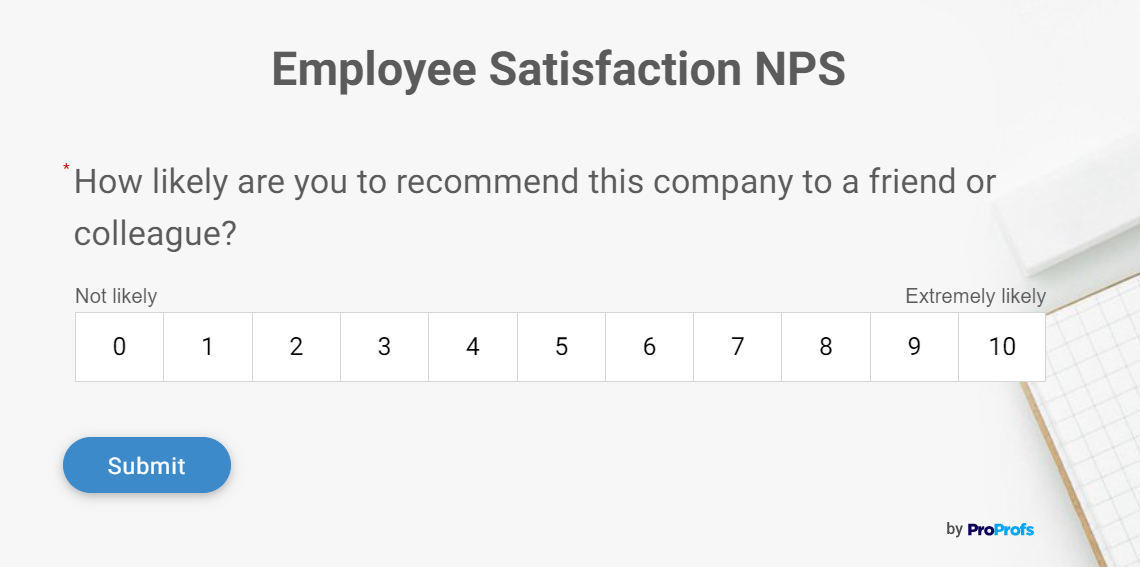
3. Employee Engagement
This template is designed to measure the level of engagement and commitment employees have toward their work and the organization. It includes questions about motivation, job involvement, and satisfaction.
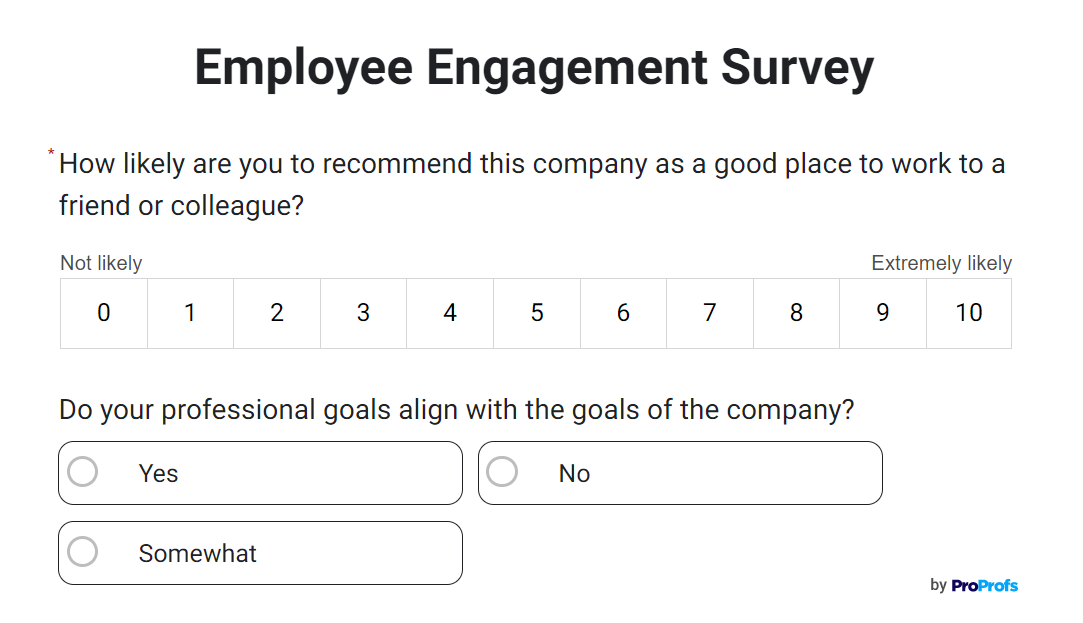
4. Recruitment Satisfaction
This template evaluates the satisfaction levels of new hires regarding their recruitment experience. It helps organizations identify strengths and areas for improvement in their recruitment processes.
5. Employee Benefits
This template collects feedback on employee benefits such as healthcare plans, retirement options, vacation policies, and other benefits offered by the organization.
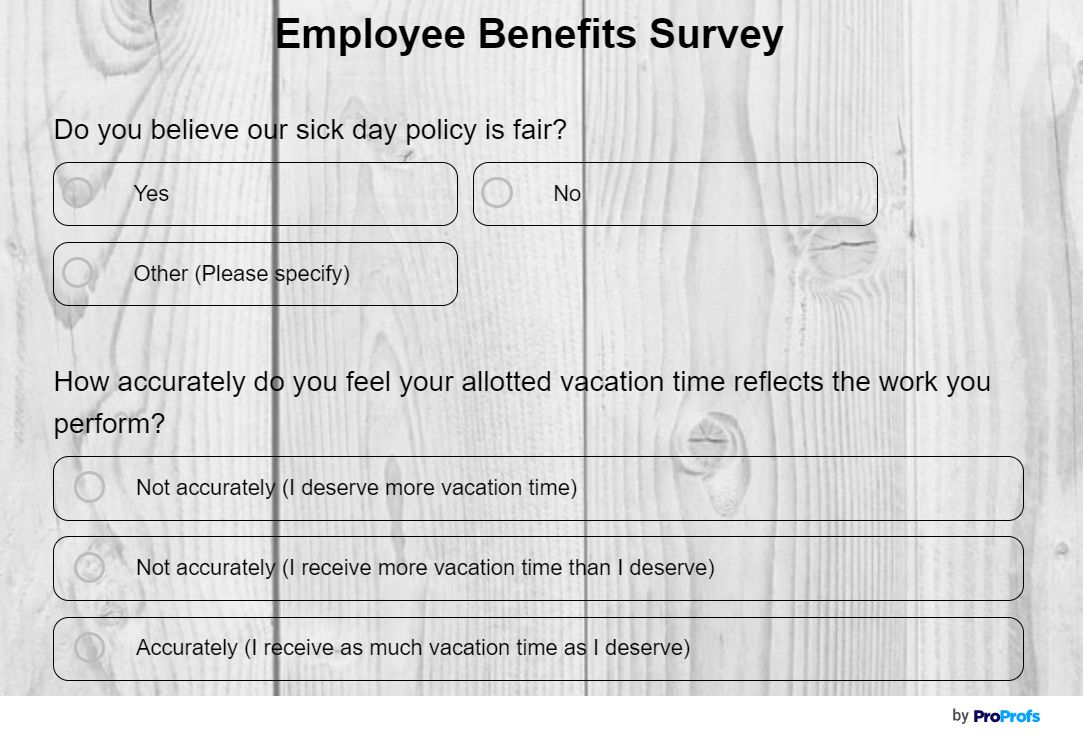
6. Workplace Satisfaction
This template measures employee satisfaction with the overall work environment, facilities, and amenities provided by the organization.
7. HR Satisfaction
This template focuses on collecting feedback from employees regarding their satisfaction with HR practices, policies, and processes within the organization.
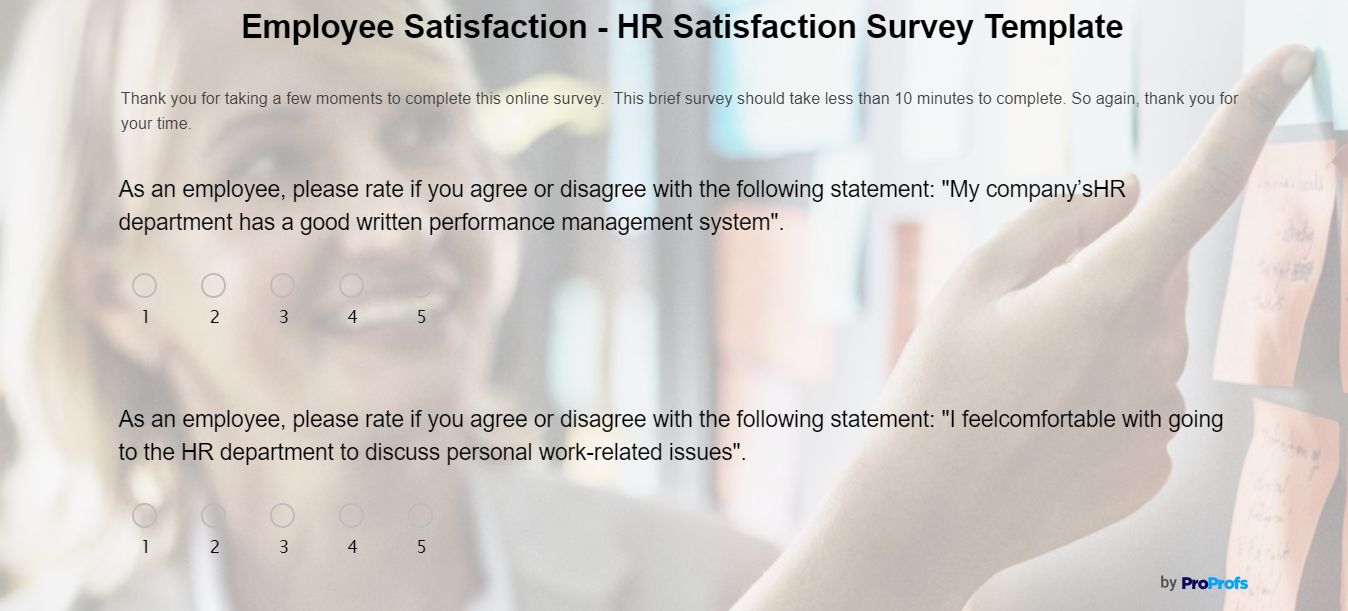
8. Employee Training
This template assesses the effectiveness and satisfaction levels of training and development efforts provided to employees.
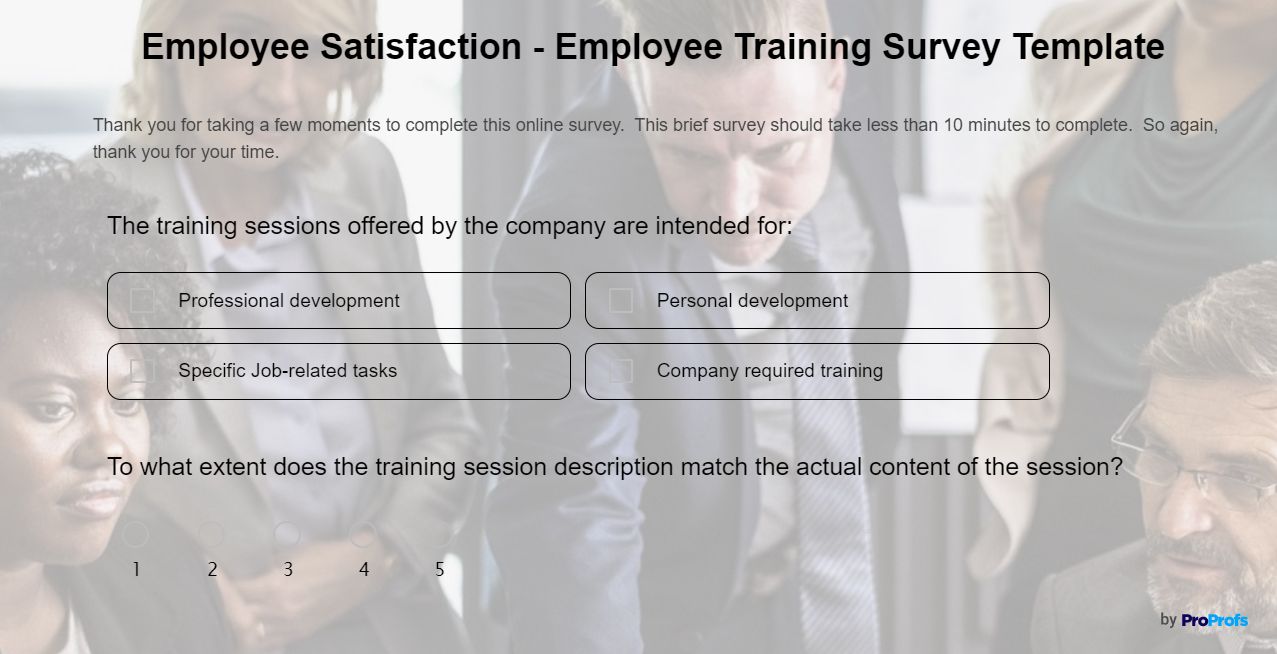
9. Employee Opinion
This template invites employees to share their opinions and suggestions on various aspects of the organization, such as communication, decision-making, and company values.
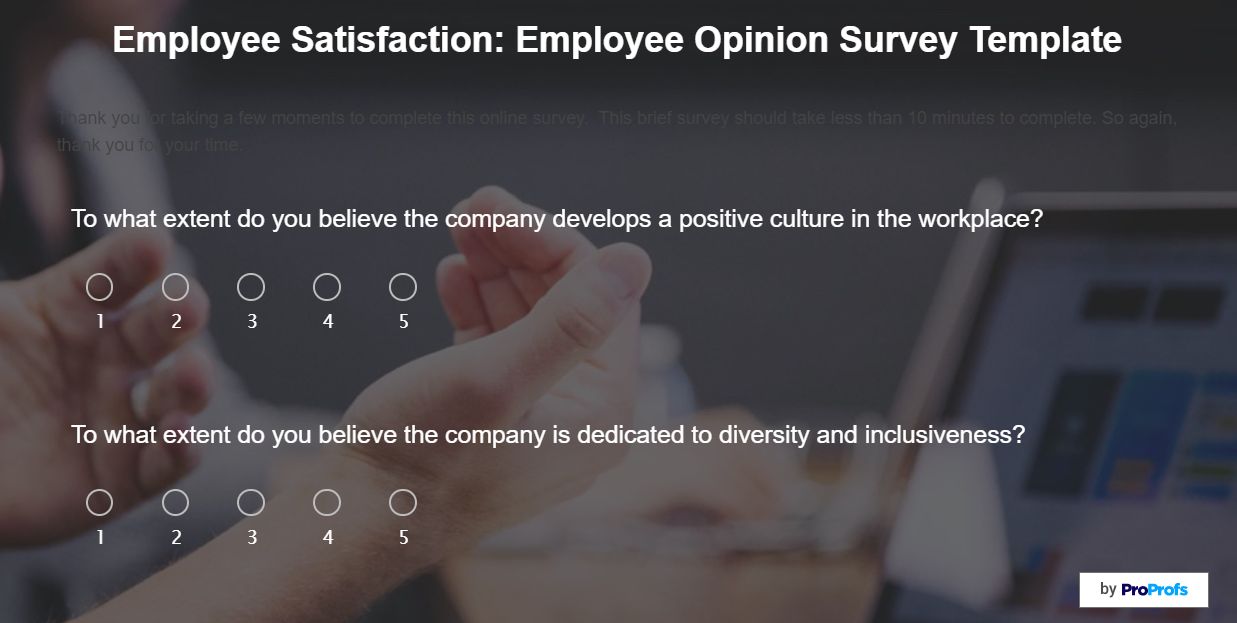
10. Employee Motivation
This template gauges employee motivation levels and identifies factors that affect their motivation at work.
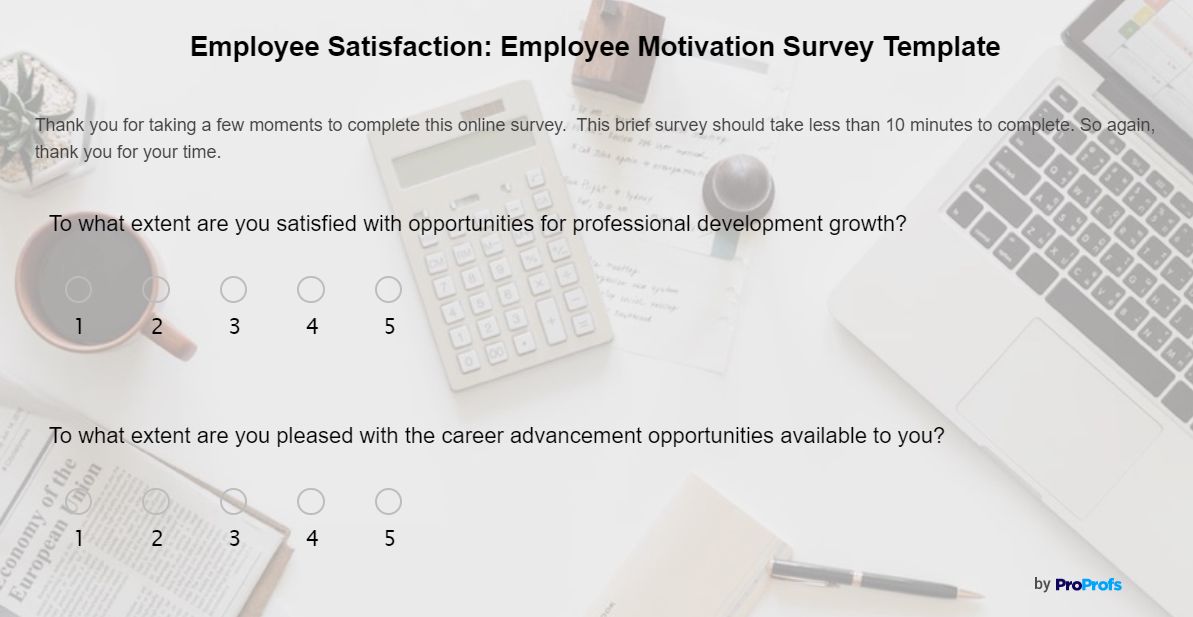
11. Job Satisfaction
This template measures the overall satisfaction levels of employees with their job roles, responsibilities, and work tasks.
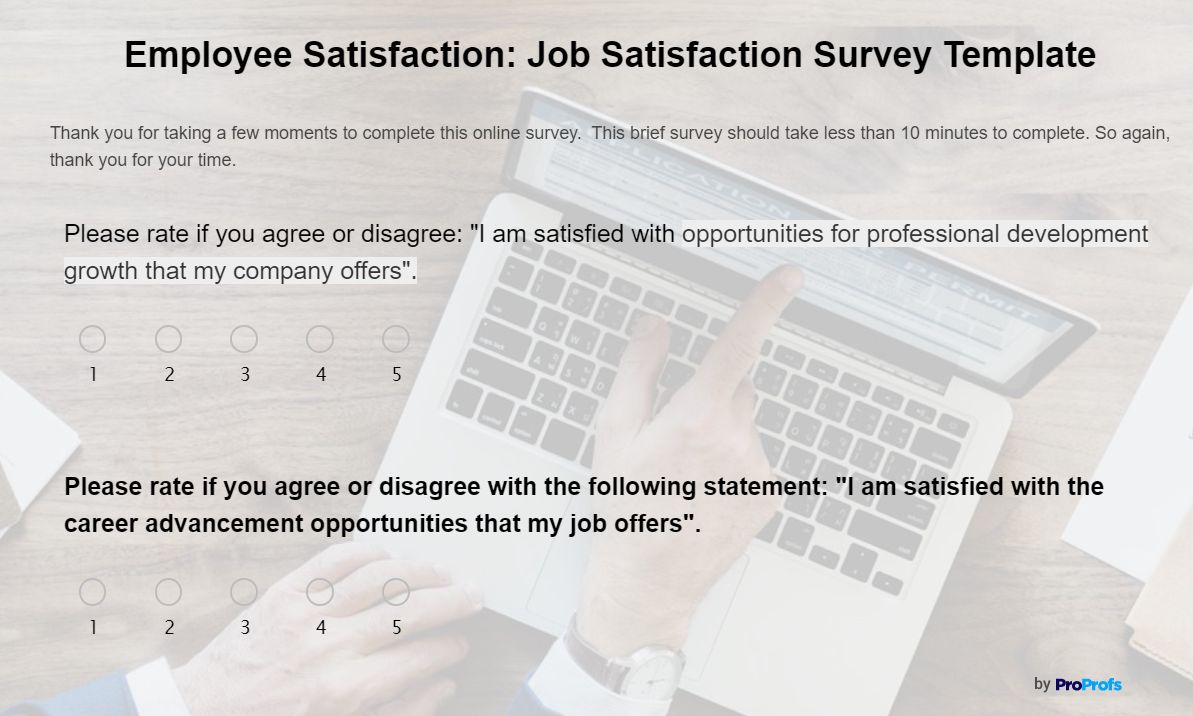
12. Employee Feedback
This template allows employees to provide feedback on various aspects of the organization, including processes, policies, and procedures.
13. Employee Climate
This template assesses the overall organizational climate and aims to identify strengths and areas for improvement to foster a positive work environment.
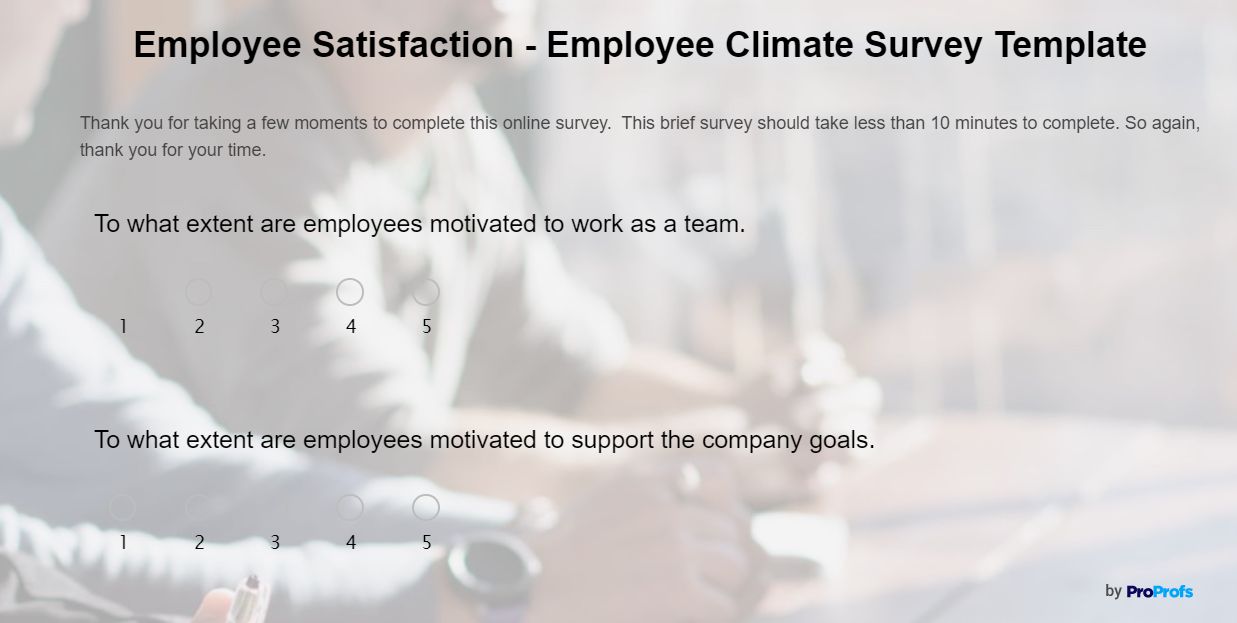
14. 360-degree Employee Evaluation
This template provides a comprehensive evaluation of an employee’s performance by collecting feedback from supervisors, peers, and subordinates.
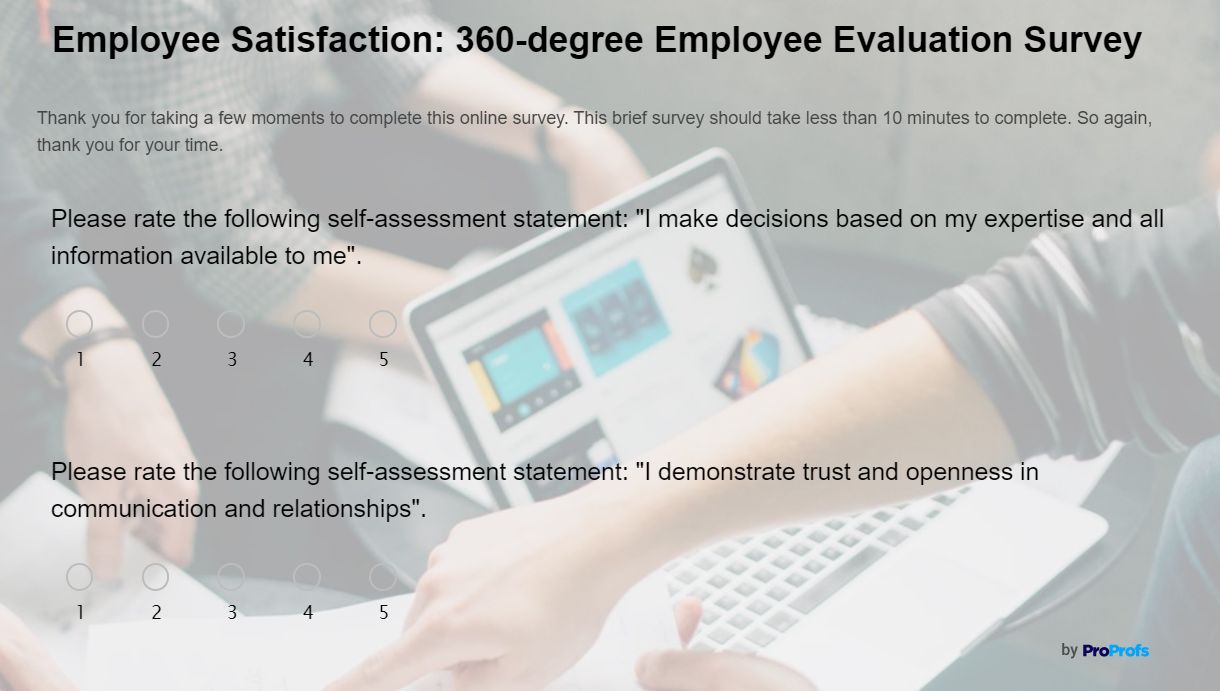
Create a Strong Culture of Employee Satisfaction By Asking the Right Questions
Analyzing employee satisfaction keeps you updated about your employees’ sentiments – their happiness with the pay and perks, the relationship they share with their managers, and their satisfaction with work recognition.
Right from reducing employee turnover rates to encouraging behavioral changes at the workplace, employee satisfaction surveys can prove to be miraculous for your business.
Ensure that the employee survey questions are simple and jargon-free. Also, keep your survey questions unbiased to ensure a fair response.
If you are looking to get started with an employee satisfaction survey, try ProProfs Survey Maker to access more than 100+ custom survey templates!
Frequently Asked Questions
Why should you measure employee satisfaction?
Measuring employee satisfaction helps organizations understand how employees feel about their work environment, job roles, and overall experience. It provides insights into areas of improvement, enhances employee engagement, and ultimately contributes to organizational success.
Why is employee satisfaction important?
Employee satisfaction is crucial because it directly impacts productivity, retention, and overall organizational performance. Satisfied employees are more engaged, productive, and likely to stay longer with the company.
What questions should you include in an employee satisfaction survey?
When conducting an employee satisfaction survey, it is important to include questions about company culture, job satisfaction, professional growth, salary and benefits, and work-life balance.
Why are employee satisfaction surveys important for employee engagement?
Employee satisfaction surveys help identify factors that drive engagement and assess areas for improvement. By soliciting feedback from employees, organizations can identify issues, address concerns, and create initiatives that enhance engagement.
Do you want a free Survey Software?
We have the #1 Online Survey Maker Software to get actionable user insights.







